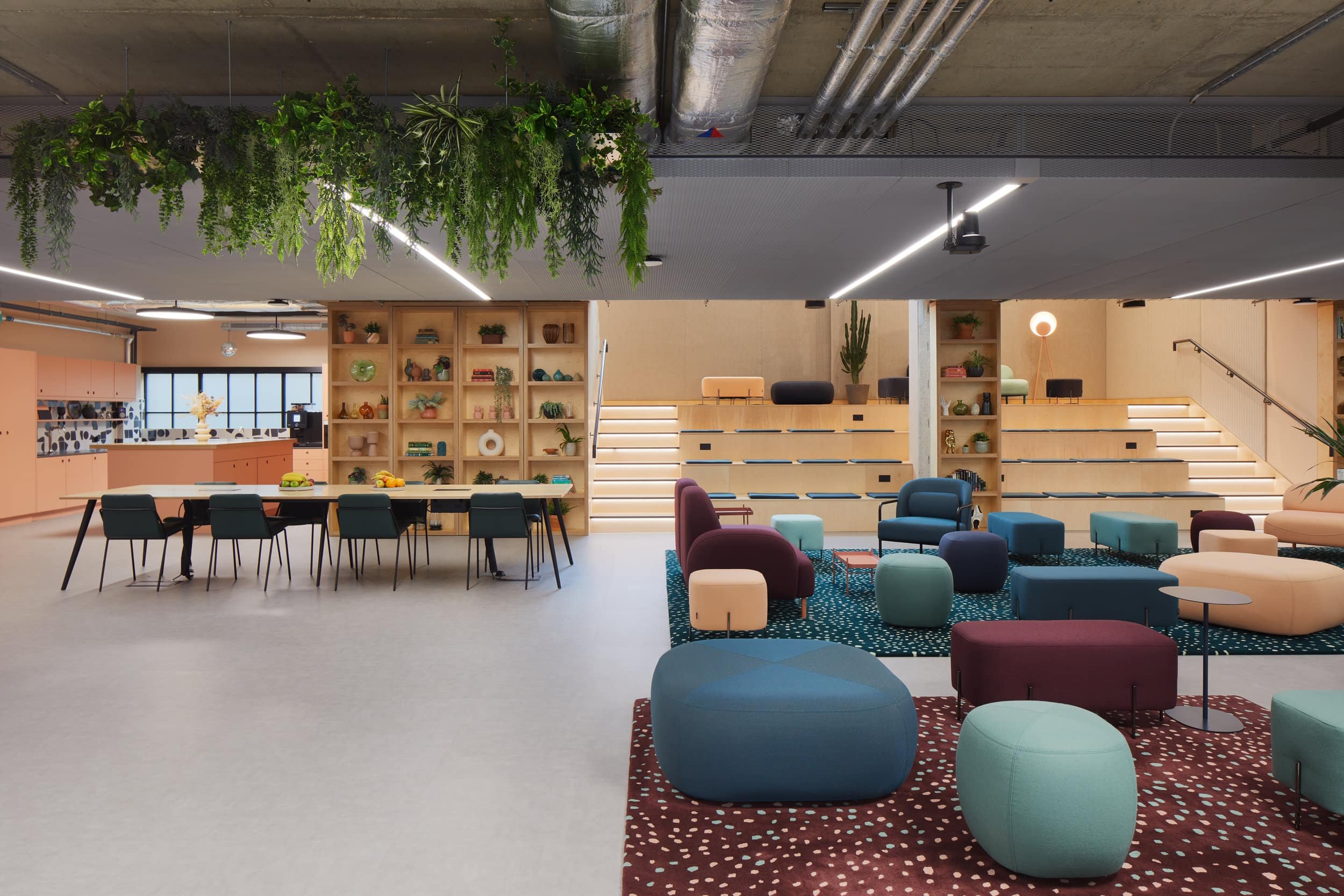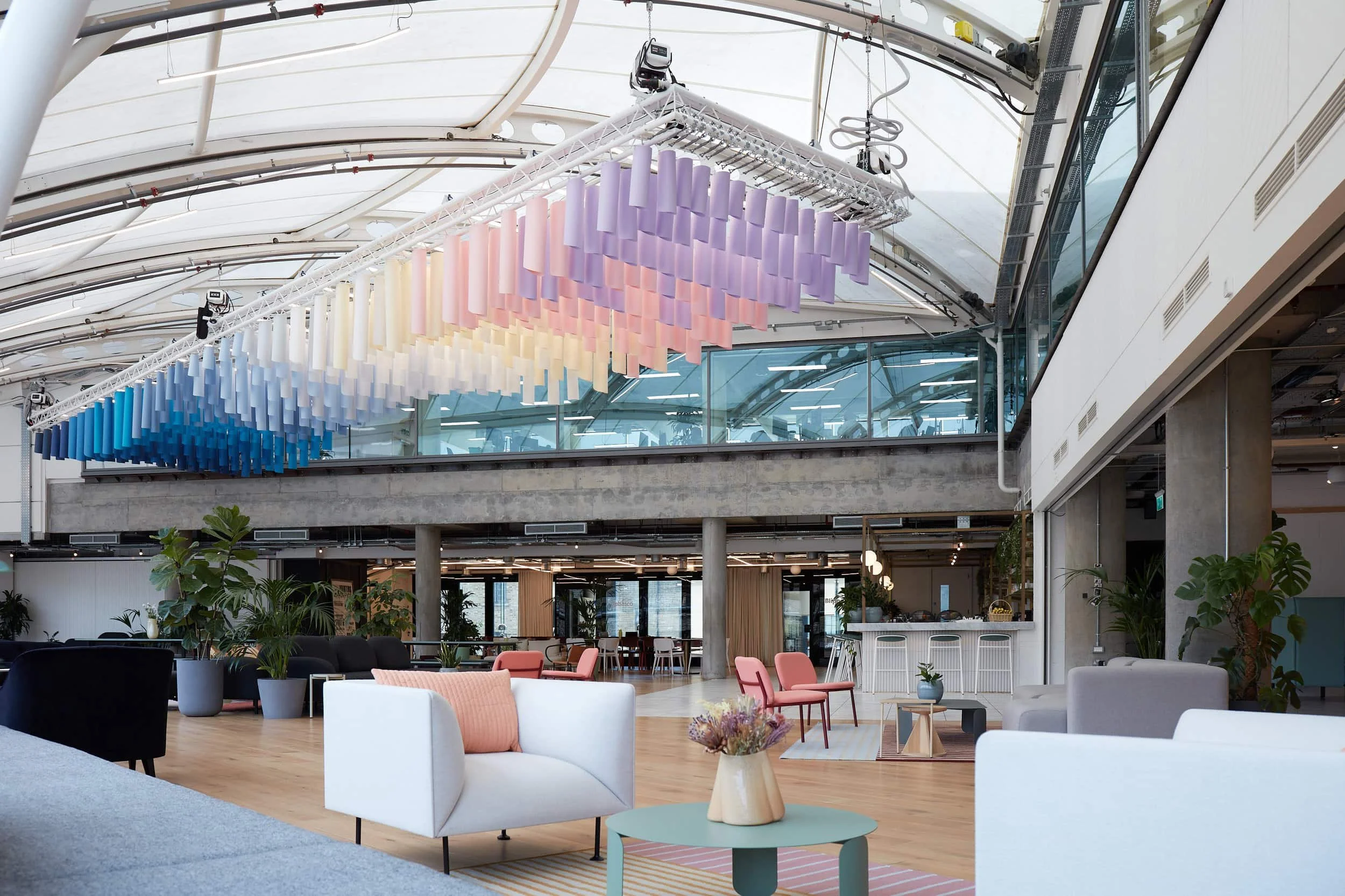Why Storytelling Matters in Design More Than Ever
In a world where consumer trust, authenticity and emotional connection are increasingly valued, storytelling has emerged as one of the most powerful tools in a designer’s kit. At our recent panel, we explored how narrative is being used to shape interiors, products and brands—from concept to execution, from archive to innovation.
The reception at Paul Mellon Centre instantly welcomes the user with warmth and colour communicating the history of the building and character of the centre itself
1. Why Storytelling Matters in Design Today
Narrative is more than just a presentation layer—it defines how people feel in a space, or connect with a product. In an age of mass production and AI, story-led design creates deeper meaning, encourages loyalty, and fosters long-term engagement. It’s a counter to the disposable and the fast.
A ceiling hung garden path invited employees to take walking meetings around the office at MVF Global
Moo’s open plan, open culture is reflected using it’s bright attitude to colour and installation which is made int he shape of it’s brand logo on multi-coloured paper as a reflection of it’s history as a business card manufacturer
2. Where Does the Narrative Begin?
Some designers start with deep listening—uncovering patterns in behaviour, culture and place. Others begin with bold convictions. What’s common is the rewriting of briefs into something richer. Collaborating across brand, user and designer perspectives often reveals multiple, intersecting narratives.
Packed with personality, this lounge space designed for Deadgood perfectly aligned to it’s expressive brand image
3. Storytelling and Brand Identity
Great brands often have clear, embedded narratives—but not always. Designers can help draw those stories out and bring them to life spatially. Misalignment between stated values and lived culture risks inauthenticity.
4. Longevity Through Emotional Connection
We become attached to spaces and objects that evolve with us. Emotional resonance drives sustainability—people keep, repair, and value what they connect with. Storytelling enables that bond, not only by reflecting the past but by leaving space for the future.
5. The Role of Craft and Process
Process itself is a story. Handcrafting, block printing, visible joinery—these add layers of human input. For heritage brands, provenance is inseparable from product. More and more, clients want to see the “making-of.”
Mirrorworks reception warmly welcomes visitors with a butter yellow centre mangers office as a backdrop to a very on brand blue mirrored reception desk
At Paul Mellon Centre studies for British Art, craft was at the forefront in the design consideration. Here, bespoke arts and crafts style rugs are central to the scheme picking up on the building’s history
6. What Makes a Narrative Authentic?
Provenance, location, and honesty. People are increasingly savvy to greenwashing and inflated origin stories. Authentic design narratives embrace evolution as well as heritage—and give users something they can believe in.
7. Craft vs AI—A Meaningful Counterpoint
Just as the Arts & Crafts movement was a response to the Industrial Revolution, the rise of AI may be fuelling a renewed interest in the handmade. Craft connects us to time, place, and process—qualities that feel increasingly rare, and increasingly precious.
Final Thought…
Design is never just about objects or aesthetics. It’s about connection, meaning, and memory. The stories we design—and the stories our spaces allow to unfold—can have lasting impact. At Trifle*, we believe in designing spaces people feel. And that always starts with story.
Emma Morley, Director at Trifle*
Emma founded Trifle* in 2010 after a career in marketing, event design and production. Frustrated by the fact that only advertising agencies had inspiring spaces she had a desire to make good design the norm for all office workers. Emma has worked across well over 150 interior projects during her career at the helm of Trifle*, she remains passionate about making amazing spaces but also making the industry more accessible, more human and more diverse.







